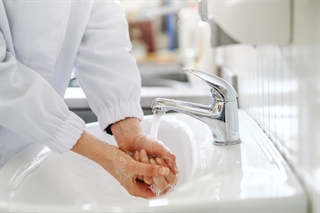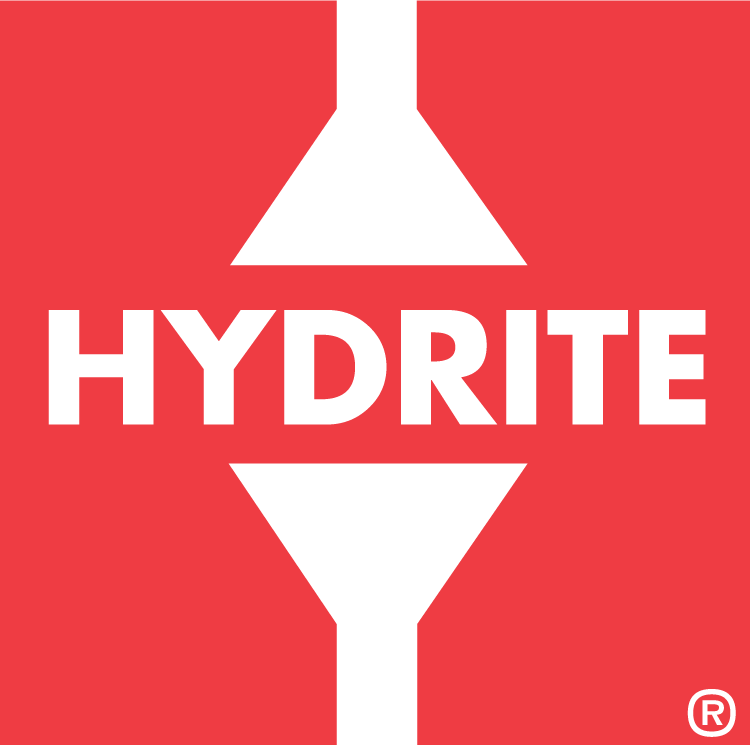Resource Summary
Hydrite COVID-19 Frequently Asked Questions and Resource Summary

What is SARS-CoV-19 and COVID-19?
SARS-CoV-19 is a novel coronavirus that has not previously been identified. This virus causes the disease COVID-19. Coronavirus is a large family of viruses common in people and species of animals. It is a respiratory virus and appears to be spread through respiratory droplets produced by an infected person coughing or sneezing. The droplets can land in the mouth or noses of people nearby or possibly inhaled.
Where can I find general resources for information on COVID-19?
The World Health Organization, Center for Disease Control and Prevention (CDC), United States Department of Agriculture, the United States Food and Drug administration (FDA), and Environmental Protection Agency (EPA) have all set up separate Frequently Asked Questions page on their websites for updated information regarding the COVID-19 pandemic.
WHO Frequently Asked Questions / CDC Frequently Asked Questions / EPA Frequently Asked Questions / USDA Frequently Asked Questions / FDA Frequently Asked Questions
These websites will answer general questions regarding the SARS-CoV-2 virus and the COVID-19 disease. These sites are updated frequently.
Where can I find specific references for food safety and the food industry?
There are many specific resources for food safety and the food industry. Identified below are a few recognized and verified references available today.
FDA has set up a separate website for industry members and consumers on COVID-19 and food safety. This website has been updated on an almost daily basis with new guidance for the food industry.
FDA Food Safety and COVID-19
What industries are considered essential critical infrastructure workforce in the United States?
On March 19, 2020 The Department of Homeland Security issued a list as guidance on Essential Critical Infrastructure workforce: Ensuring Community and National Resilience in COVID-19. This list is an advisory and should not be considered a federal directive or standard itself. State and local officials may use their own judgement in issuing implementation directives and guidance.
Department of Homeland Security Identifying Critical Infrastructure During COVID-19
Department of Homeland Security Guidance on the Essential Critical Infrastructure Workforce
Where can I find a list of disinfectants effective against SARS-CoV-2?
This Environmental Protection Agency (EPA) released List N: Product with Emerging Viral Pathogens AND Human Coronavirus Claims for Use Against SARS-CoV-2, the virus causing the disease COVID-19. The products listed have not been tested against SARS-CoV-2 but have demonstrated based on:
- efficacy against another human coronavirus similar to SARS-CoV2
- having emerging viral pathogen claim
- efficacy against harder-to-kill virus such as norovirus
None of these products have been tested against the actual SARS-CoV-2 virus because few, if any, studies have been conducted as this is an emerging, novel virus. They have been proven against the above specifications.
Additionally, the EPA registration number on the product (check the label) may be on the list but sold under a different brand name. This is the case for Hydrite products.
Per EPA, “These products may be marketed and sold under different brand names, but if they have the same EPA registration number, they are the same product.”
EPA List of Products and Emerging Viral Pathogens and Human Coronavirus Claims
Another resource for disinfectant label information is the National Pesticide Information Retrieval System. This system is a good resource for sanitizers and disinfectant information on EPA labels, approval letters and correspondence. National Pesticide Information Retrieval System
What’s the difference between a sanitizer and a disinfectant?
EPA regulates the term sanitizer and the compound must pass the sanitizer efficacy test. Sanitizers used in food processing must kill 99.999% or 5 log reduction of specific test bacteria in 30 seconds on food contact surfaces. Sanitizers reduce 99.9% or 3 log of specific test bacteria in 5 minutes on non-food contact surfaces. Sanitizers reduce the bacterial contamination to levels safe as determined by public health authorities. In food processing, sanitizers are used on a routine basis at the end of the cleaning and sanitation procedures. Sanitizers are routinely used on food contact surfaces.
Disinfectants kill a wider range of microorganisms including bacteria, fungi and viruses. Disinfectants remove 99.9999% or 6 logs of specific microorganisms in 10 minutes. Disinfectant levels are not generally used on food contact surfaces and not used on people. If disinfectant levels are used on tabletops (i.e. in cafeterias) EPA considers this a food contact surface and a rinse must be conducted post disinfection process.
Sanitizers are used at much lower concentrations than disinfectants and, generally, at less contact time.
EPA Summary of Federal Insecticide, Fungicide, and Rodenticide Act
EPA Efficacy Testing
Where can I find general cleaning and disinfection recommendations?
CDC is continually updating their website with guidance on cleaning and disinfecting practices for community facilities. These guidelines are reference for cleaning and disinfecting non-healthcare settings. These may be a useful reference for food manufacturers, but additionally measures may be necessary. CDC Guidelines on Using Disinfectants
FDA and USDA regulated facilities should have procedures in place for maintain clean and sanitized facilities and food contact surfaces. These procedures for the processing areas should continue to be followed per the risk assessment and food safety/ HACCP plans already in place. FDA Frequently Asked Questions
The European Centre for Disease Prevention and Control (ECDC) issued a technical report in February 2020 to provide guidance about environmental cleaning in non-healthcare facilities (public offices, transportation, schools etc.). The guidance is based on current knowledge of the virus. ECDC Guidance to Environmental Cleaning
What additional precautions may be necessary to prevent spread of the disease or in the case an employee tests positive for COVID-19?
Food manufactures are renting tents, removing extra chairs, staggering breaks and shifts, restricting visitors and performing additional routine sanitation activities after common areas are heavily used for breaks and lunch. Additionally, employers may be screening employee temperatures prior to entry into the facility. This need to be done in a confidential manner and compliance must be to CDC, local or state health authority guidance to slow the spread. The US Equal Employment Opportunity Commission is updating a 2009 Pandemic Preparedness in the Workplace guidance. Prior to commencement of this activity, legal advice should be sought. EEOC Guidance
If an employee is confirmed positive with COVID-19, employers should inform other employees of the infection while maintaining necessary confidentiality protections. Sick employees are to follow CDC guidance of what to do when you are sick with COVID-19. Employers should contact the local health departments for additional guidance. CDC What to do if you are sick with COVID-19 and Local Health Department Contact Information Additional guidance is in development by USDA, FDA and CDC.
What is known about the longevity of SARS-Cov-2 in the air and on surfaces?
A collaborative study from the National Institute of Allergy and Infectious Diseases, CDC, Princeton, University of California was published in the New England Journal of Medicine on March 17, 2020. This study indicates SARS-CoV-2 can remain viable in aerosols for three hours, with reduction in numbers in the air over that time. It appears to be viable on copper up to four hours, cardboard up to 24 hours and stainless steel and plastic two to three days. The virus does appear to reduce in number over time on the surface. Additional studies are underway and additional information is needed to have a definitive understanding of SARS-CoV-2. NEJM SARS-COV-2 Aerosol and Surface Stability
Other than social distancing how can I prevent the spread or reduce my chances of contracting the virus?
One of the best ways to reduce the spread and introduction into your own body is through handwashing. Wash hands often with soap and water for at least 20 seconds especially after being in public places, touching common surfaces, blowing your nose, coughing or sneezing. CDC Guidelines on Use of Hand Care Practices Hygiene and Use of Alcohol Based Disinfectants for the Hands and World Health Organization Handwashing
The use of hand sanitizers with at least 60% alcohol are recommended when soap and water are not available. Hand sanitizers may not be as effective if hands are visually dirty. It should not be used as total replacement for proper handwashing. FDA advises against the use of quaternary ammonia hand-dips as a replacement of alcohol-based hand sanitizers. CDC How and When to Handwash and FDA Food Safety and COVID-19
Is food or food packaging a vehicle for transmission of COVID-19?
The current belief of FDA, CDC, and WHO is food and food packaging are not a vehicle of transmission of SARS-CoV-2. There have been articles circulating that suggest food may be implicated in COVID-19. As of now, no illness has been linked to food COVID-19. Food Safety and Coronavirus: A Comprehensive Guide
Also, FDA has indicated they do not anticipate food product will need to be recalled or be withdrawn from the market because of COVID-19. On March 18, 2020 FDA held a briefing for food stakeholders on COVID-19.
What if I hear something about COVID-19 and I don’t know if it is true?
The Federal Emergency Management Agency (FEMA) has set up a website to address those concerns. If you are unsure if the information is fact or fiction, visit the site below. Also, submit questions as FEMA is compiling FAQ to be published at this website. FEMA Coronavirus Rumor Control
